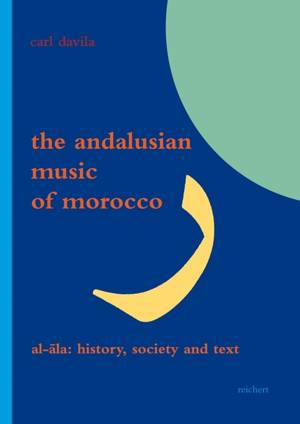
- Afhalen na 1 uur in een winkel met voorraad
- Gratis thuislevering in België vanaf € 30
- Ruim aanbod met 7 miljoen producten
- Afhalen na 1 uur in een winkel met voorraad
- Gratis thuislevering in België vanaf € 30
- Ruim aanbod met 7 miljoen producten
Zoeken
Omschrijving
In this book, Carl Davila has reshaped the historical narrative concerning al-Ala, the Andalusian music of Morocco, highlighting this poetic-musical tradition's social foundations and the interplay of oral and literary processes in its preservation and transmission across generations. Part 1 reveals the role played by informal and formal institutions in the tradition's development, from its earliest phase as the elite courtly music of Islamic Spain, through a middle period when the tradition served as a marker of social identity amongst Andalusi migrant communities in North Africa, and into the modern era when it has achieved a much wider audience as Morocco's national classical music. Although oral communication and the social intimacy it fosters have been highly valued by participants in the tradition throughout this evolution, over the past two and a half centuries, written anthologies also have evolved as iconic representations of the tradition that function alongside the oral processes without replacing them. Part 2 develops a "value theory of tradition" to explain this survival of oral and literary processes side-by-side within the boundaries of the tradition (a phenomenon he describes as "mixed orality"). Davila argues that they coexist because they embody distinct but complementary sets of social values. In emphasising the different social values attaching to oral and literary processes, this book brings a new approach to Andalusian music studies, and more generally makes important contributions to studies of the social foundations of Arabic poetic traditions. It is directed primarily at scholars of the North African Andalusian music traditions, and to scholars and students of classical Arabic poetry, but anthropologists and ethnomusicologists focused on North Africa will also find interesting insights, as well.
Specificaties
Betrokkenen
- Auteur(s):
- Uitgeverij:
Inhoud
- Aantal bladzijden:
- 368
- Taal:
- Engels
- Reeks:
- Reeksnummer:
- nr. 38
Eigenschappen
- Productcode (EAN):
- 9783895009136
- Verschijningsdatum:
- 12/08/2013
- Uitvoering:
- Boek
- Afmetingen:
- 178 mm x 244 mm
- Gewicht:
- 771 g

Alleen bij Standaard Boekhandel
+ 492 punten op je klantenkaart van Standaard Boekhandel
Beoordelingen
We publiceren alleen reviews die voldoen aan de voorwaarden voor reviews. Bekijk onze voorwaarden voor reviews.








